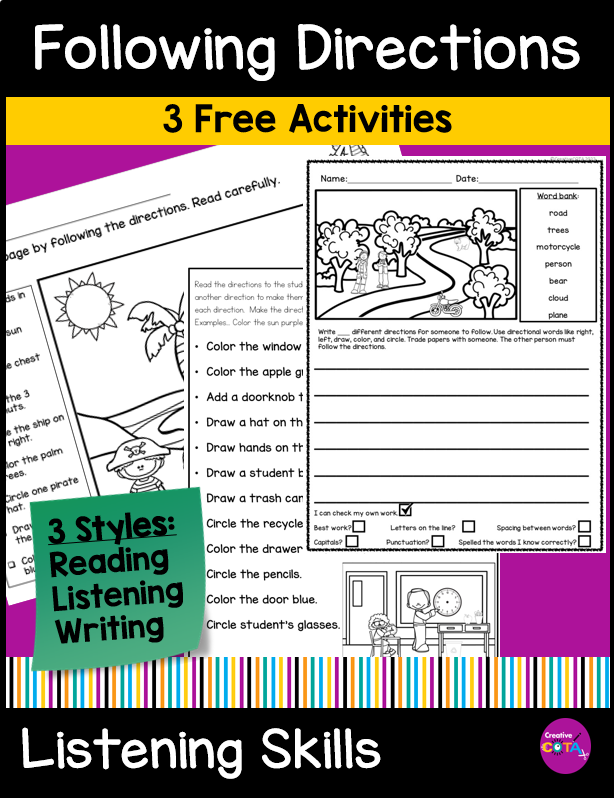
OK, I am avoiding working on my own titles and descriptions this morning and thought I would share some tips on what I really should be spending my time on today 😊.
The most amazing item won’t sell with a few-word title hidden behind 100 others on a shelf. It also won’t be seen if it has bland, uninformative packaging. Think of a box of cereal on the top shelf with just the word “cereal” on the front. Would it catch your eye and make you buy it? Probably not. Cereal is really expensive right now, so you either won’t notice it or will skip it for your favorites. I also don’t have time to find someone to get it off the top shelf for me to see if it’s something my family might want. (I’m barely 5 feet tall on a good hair day 🌟)
Why Titles and Descriptions Matter:
- Visibility: To get your resources seen, they need informative, keyword-rich titles and descriptions to be found online. You need to get on page one for as many keywords as possible.
- Reachability: Your titles need to be clear and descriptive so they display what is included and why someone needs it.
- Expert Advice: You are the expert on your resource. Tell people why they need it using words they might use to search for it.
My Process:
- Keyword Brainstorming: I write down all the words I can think of that someone might put into a search bar for a resource like mine.
- Search Bar Research: I go to the search bars on TpT, Pinterest, and Google when trying to title new resources or update older ones that aren’t getting as many views as I’d like. I use those drop-downs to see what other words come up with my search words. I also look at some best sellers to see what they use and how many reviews I would need to break onto the first page of the search.
- Look for Niche Terms: I look for less popular terms that fit my resource and may get me to page one or two when I first post the resource.
Leverage Your Subscribers: When I post a new resource, I email my subscribers to let them know it’s available at 50% off for the first few days. Sales are a signal to the TpT algorithm that the resource is popular, boosting its visibility in search results.
Title Creation Tips:
- Combine Keywords: I put all the keywords I generate into ChatGPT with a prompt like, “You are an SEO expert. Please come up with 5 titles to sell [insert resource]. Make them around 80 characters and don’t use punctuation. Use the following keywords and more.” Then, I combine those into what best suits my resource.
- Check Length: Wordcounter.net is a great way to get as close to 80 characters as possible.
- Research words: Social-emotional learning and SEL show the same results or are very close. This is also true for ABC and alphabet. I choose the versions that allow me extra characters for other keywords. I use & often instead of and for the same reason.
- Other Title Tips: When crafting titles for your TPT resources, remember that they don’t need to be complete sentences. Instead, focus on incorporating short and long-tail keywords naturally and keep them together to improve search visibility. Avoid punctuation, as it can interfere with search engine algorithms. Aim for a flow that makes it easy for potential buyers to understand exactly what your resource offers at a glance.
Long-tail keywords are specific phrases that target niche markets. For example, instead of just “scissor skills,” a long-tail keyword would be “fine motor scissor skills activities for preschoolers.” This helps attract buyers who are looking for very specific resources.
Short keywords are concise terms that capture the essence of your resource. They typically consist of one or two words and focus on broad topics. While they have a high search volume, they can also be highly competitive. Use short keywords to establish a general theme and pair them with long-tail keywords for more precise targeting.
Fun Example:
- Initial Title: Brown Bag
- Prompt for GPT: “You are an SEO expert. Come up with a keyword-rich 80-character title for a brown paper bag. Use words like versatile, storage, and environmentally friendly.”
- Better Title: Versatile Environmentally Friendly Brown Paper Bag for Storage & Everyday Use 🌱
Applying It to TpT Resources:
I was thinking about an ABC craft activity for back to school I’m creating to sell in my store. Here’s how I tackled the title:
- Initial Search: What does page one look like for certain titles?
-
- “Back to School Activities” – 490K in search results, the first page has resources with thousands of reviews> I will never get there.
- “Back to School craft” – 51K resources, with hundreds of reviews on page one. Maybe someday.
- “Back to School Preschool” – 34K results, still a lot of highly reviewed resources on page one.
- “Preschool fine motor activities” – 36K, some resources with under the 100 reviews.
- “Scissor Skills” – 13K – Some resources with feedback in the teens others in the 100s.
- “Back to school scissor skills” – 2500, some resources with no feedback-promising
- “Alphabet letter craft activities preschool” – 2600, many with no feedback
- “Preschool letter of the week” – 5900, 15-100+ feedback ratings
- “Preschool letter of the week crafts” – 1500 Many resources with no feedback on page one!
- ChatGPT Prompt: You are an SEO expert please give me 5 title options with 80 character for a ABC letter craft activity. Do not use punctuation. Use the following keywords and more: Alphabet letter craft activities preschool Scissor Skills Fine Motor Morning Work Activities letter of the week back to school
- Results: Here are five title options without punctuation:
- Alphabet Letter Craft Activities Preschool Scissor Skills Fine Motor Fun
- Back to School ABC Letter Craft Preschool Morning Work Scissor Skills
- Letter of the Week Craft Alphabet Activities Fine Motor Scissor Skills
- Preschool ABC Letter Craft Scissor Skills Morning Work Fine Motor Activities
- Fun Alphabet Letter Craft Activities Preschool Scissor Skills Back to School
- Final Title for Best Possible Ranking: Preschool Letter of the Week Crafts Scissor Skills Practice Fine Motor Activity (79 Characters)
Optimized Description:
Include all your title keywords and any you could not fit in a title into your description. The first few sentences of the description are the most important for the search:
Are your Preschool or Kindergarten students struggling to develop their scissor skills at the start of the school year? Do they need to work on letter identification or writing? These ABC letter crafts are perfect for building those skills with activities that support letter recognition and formation when students come back-to-school. It includes a craft for each letter of the alphabet that can double as first-day-of-school coloring pages, making it easy to integrate into your curriculum or lesson plans. These activities were designed for my occupational therapy students to practice coloring, cutting, and gluing skills, but they are ideal for morning work, open house displays, and bulletin boards, providing a creative way to decorate for back-to-school night. Give each student a different letter to create a great display for parents. Perfect for letter-of-the-week activities and literacy centers, this resource also works well in task bins to enhance early literacy and fine motor skills. Just print, and you’re ready to go!
This gives me more opportunities to show up on page one for different keywords.
Why Covers, Thumbnails and Previews Matter:
Now, let’s talk about covers, thumbnails, and previews. They’re just as crucial as your titles and descriptions! Think of them as the front and back of the cereal box—where all the good information is.
- What Great Covers, Thumbnails & Previews Should Do:
- Show What’s Included: Potential buyers need to see exactly what they’re getting for their money. Clear, concise visuals help them understand the value of your resource.
- Solve a Problem: Make sure your visuals highlight how the resource solves a problem for the teacher, therapist, or student. This could be anything from helping a student improve scissor skills to saving them Prep time by providing a print-and-go activity for morning work.
- Explain Usage: Show how and when the resource can be used—whether it’s during centers, as part of a lesson plan, or for early finishers.
- Include Key Details: Don’t forget to highlight essential details like differentiation options, the grade level it’s best for, and any unique features.
Your thumbnails and previews are your chance to convince a buyer that your resource is the solution they’ve been looking for. Make sure they’re informative, visually appealing, and easy to understand.
OK, now I need to finish the resource I just wrote a title and description for! 🎉I will come back and update you on where my new resource falls in the search for different terms. Happy creating and updating.
About the Author:
Hi, I’m Cindy! I’m a wife, mother, and occupational therapy assistant with over 25 years of experience in public schools. At CreativeCOTA LLC, established in 2016, I’m passionate about using SEO to boost the visibility of my TpT resources. My dedication to SEO has paid off with increased sales even when many others are struggling. By leveraging insights from SEO experts, I’ve made sure my resources effectively reach more buyers. I’ve been on this journey for almost 8 years, continuously refining my strategies to help more teachers and therapists find valuable, engaging activities. Feel free to email me with any questions at Cindy@CreativeCOTA.com. I’d be happy to help!






